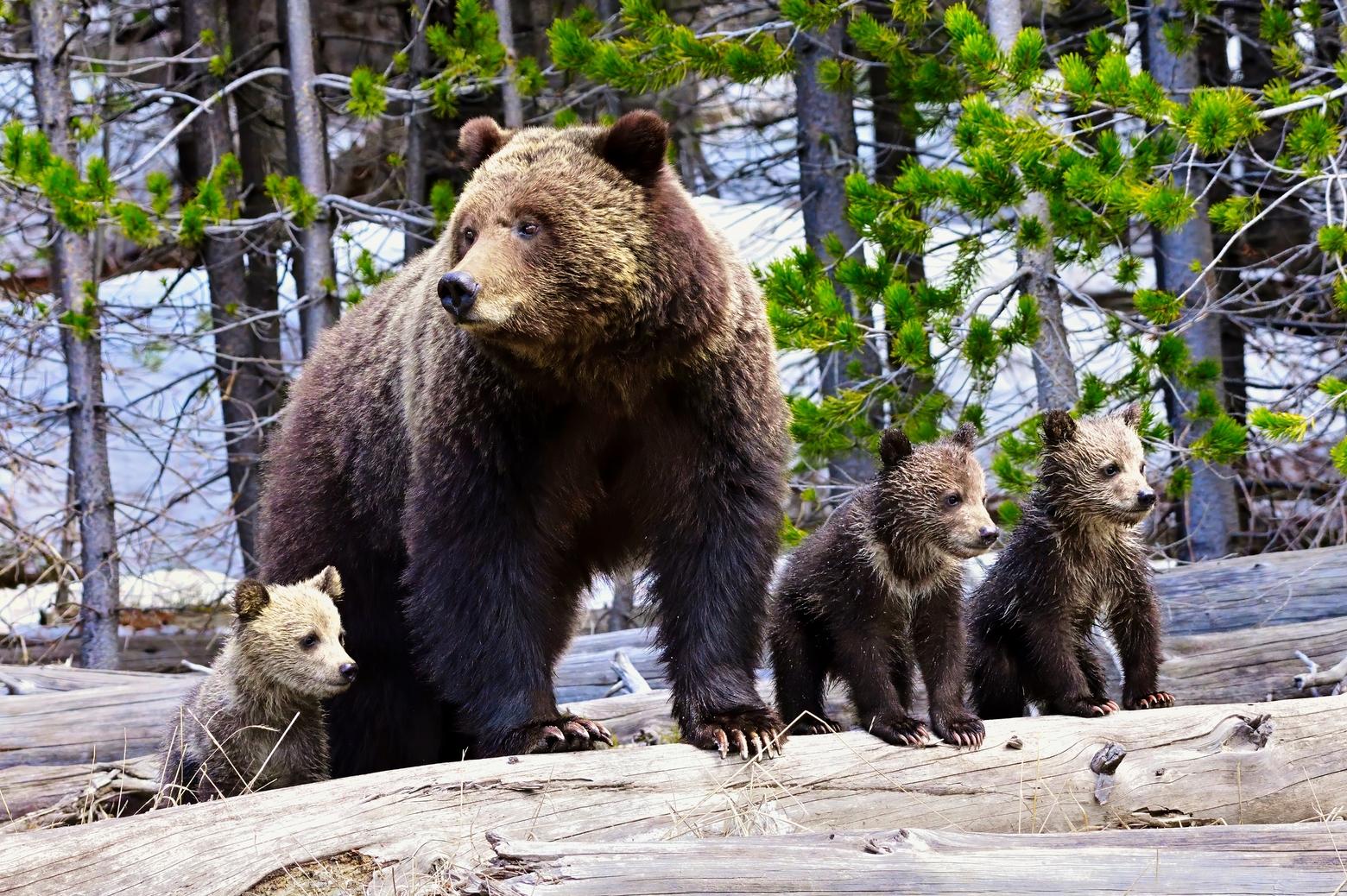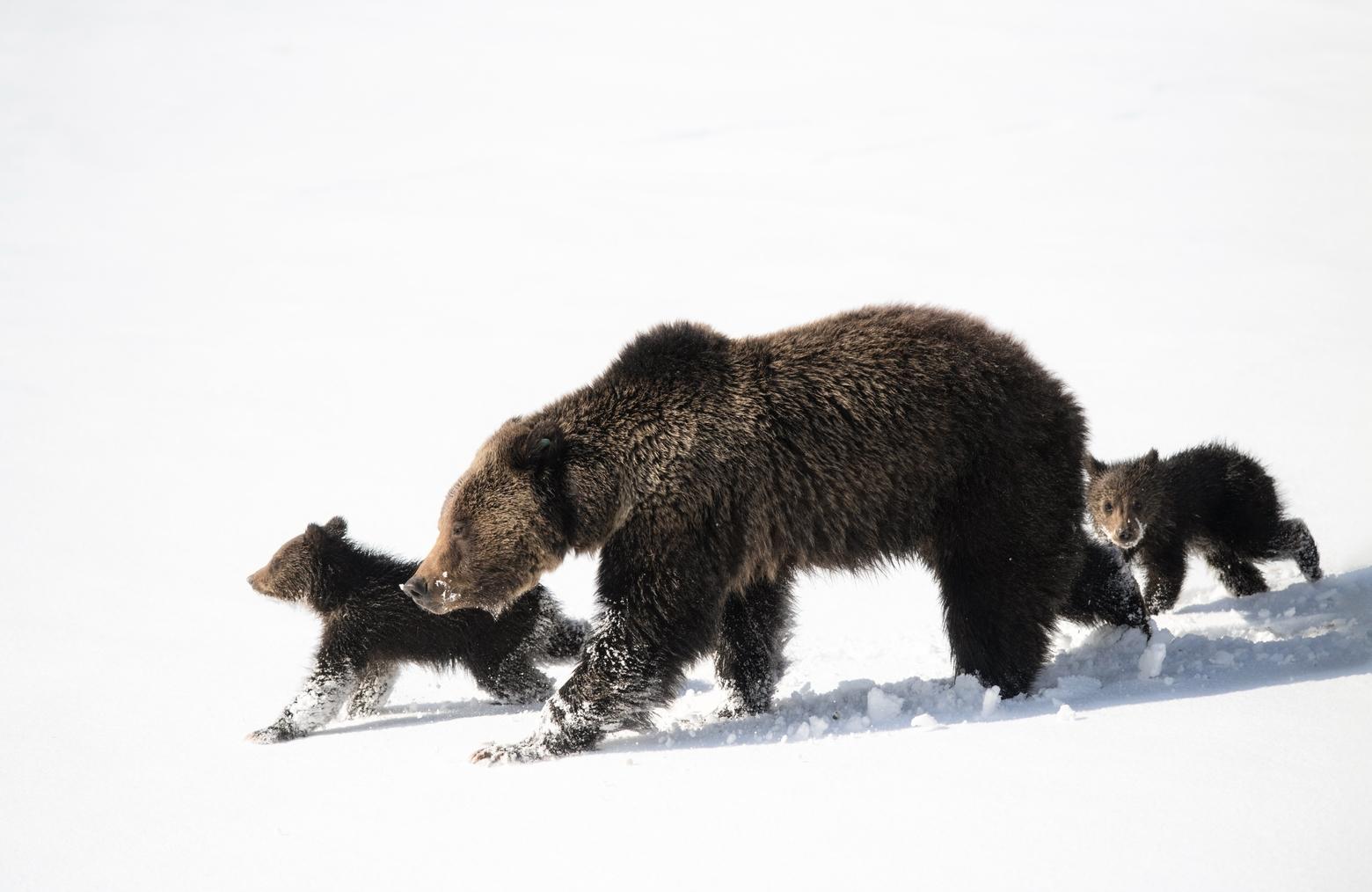Back to StoriesFormer FWS Grizzly Coordinator Updates Own 30-Year-Old Recovery Plan, Prompting Petition
December 20, 2024
Former FWS Grizzly Coordinator Updates Own 30-Year-Old Recovery Plan, Prompting PetitionWeeks before agency decides whether or not to delist grizzlies, 15 environmental groups petition for plan revision
by Sophie
Tsairis
Dr. Chris
Servheen, leading bear biologist and the original author of the 1993 Grizzly Bear Recovery Plan, submitted a December 9 report to the U.S. Fish and Wildlife
Service highlighting the ongoing struggles of grizzly bears despite 50 years of
Endangered Species Act protections.
Servheen
served as the FWS grizzly bear recovery coordinator from 1981 until his retirement in 2016. He
currently co-chairs the North American Bears Expert Team for the International
Union for Conservation of Nature.
On the
heels of the report, 15 national, regional and state environmental, tribal and
animal welfare groups led by Earthjustice have petitioned FWS to update the current plan with
Servheen’s recommended revisions. The agency is expected to announce its
decision about whether to delist grizzly bears from Endangered Species Act
protections by January 20, the same day as the presidential inauguration. If
grizzly bears are delisted, management of the species will fall to the states, something Montana has long sought but hasn’t experienced for
nearly 50 years. Wyoming, Idaho and Montana have agreed to a Tri-state
Memorandum of Agreement to coordinate population management should the
agency decide to delist grizzlies.
“Grizzlies would be most secure as one large interconnected population, which is called a metapopulation, [that would] essentially connect all of those four ecosystems in the Northern Rockies into one unified population.” – Chris Servheen, former FWS Grizzly Bear Recovery Coordinator
In
his 2024 report, Servheen listed reasons why grizzly bears have not recovered
and why FWS should continue offering them protections. “Fragmented recovery
areas leading to isolated populations, increasing mortality risk from
regressive anti-predator policies, conflicts in connectivity areas, loss of
habitat, increasing human development causing human-bear conflicts, and
inadequate mortality and habitat regulatory protections continue to impede
recovery efforts,” he wrote.
Servheen
told Mountain Journal that many of the threats listed above are new or
have evolved since he penned the Recovery Plan more than three decades ago and that
his proposed updates incorporate new science and management practices addressing
those threats and offering approaches that will lead to an achievable recovery
for the species.
Kristin Combs, executive
director of Wyoming Wildlife Advocates, said she doesn’t know what FWS will decide
as it weighs the delisting of grizzlies in Greater Yellowstone Ecosystem or Northern
Continental Divide Ecosystem. The agency will decide the fate of grizzlies in
each of these subpopulations, or it can choose to delist all grizzlies in the Lower
48.
“Until conflicts are greatly
reduced—including vehicle and train strikes, bears being killed because of
front country [garbage] conflicts and livestock conflicts—bears are still in
jeopardy of quickly losing numbers and ending up back where we started with
recovery,” Combs said. “To lose 50 years of recovery in a few years because the
states consider bears to be an inconvenience and nuisance would be a tragedy of
the greatest level.”
In a media
event following his updated report, Servheen offered solutions he
says would help alleviate recovery efforts. “Grizzlies would be most secure as
one large interconnected population, which is called a metapopulation, [that
would] essentially connect all of those four ecosystems in the Northern Rockies
into one unified population,” he said. “This would increase demographic
resiliency so that the populations are stronger. It would increase genetic
resiliency, so there wouldn’t be genetic problems from isolated populations,
and it would provide climate change resiliency as habitats change with less
snow and more fires.”
Servheen said
other key updates in the revised plan include working toward coexistence between
people and bears who live in the connectivity habitats and a commitment from
states to stop killing wolves with traps and snares, which are also killing
grizzlies.
His concern for the species extends past the January 20
deadline, knowing the incoming administration has the potential to cause
irreversible damage to a 40-plus year recovery effort. He added that the risks
for grizzlies are many, with the delisting decision looming and an incoming
administration that has no interest in grizzly bears at all.
“The [Trump] administration
could cut the budget for any grizzly bear recovery, eliminate all FWS grizzly
recovery staff, or support congressional delisting,” he said. “Once grizzlies
are delisted, they will never be listed again, and anti-carnivore state
politicians can do to grizzlies what they are currently doing to wolves.”
Over
his extensive career studying grizzly bears, Servheen has consistently
evaluated the conditions for delisting. While removing ESA protections could
signal a conservation success, he contends current population levels and
management plans fall short of ensuring the species' long-term survival.
“I didn’t want
to be against something; I wanted to be for something,” he said. “The idea [of
an updated report] was to put together a plan that would make real recovery
achievable [for grizzly bears].”
__________________________________________________________________________________________________
Mountain Journal is a nonprofit, public-interest journalism organization dedicated to covering the wildlife and wild lands of Greater Yellowstone. We take pride in our work, yet to keep bold, independent journalism free, we need your support. Please donate here. Thank you.
Related Stories
March 28, 2024
Wolves: Taking Aim from the Air
Conservation orgs are battling the aerial shooting of
wolves, coyotes and foxes on Idaho public lands. Now they’ve submitted a
petition to the...
April 3, 2024
If Grizzlies Delisted, Here's What Montana Plans to do
Is the Treasure State’s proposed Grizzly Bear Management Plan really a grizzly hunting plan?
April 9, 2025
Idaho DEQ Presses Pause on Proposed Stibnite Gold Mine
Agency requires mining company to revise water quality plan related to a gold mine that would process 120 million tons of...





